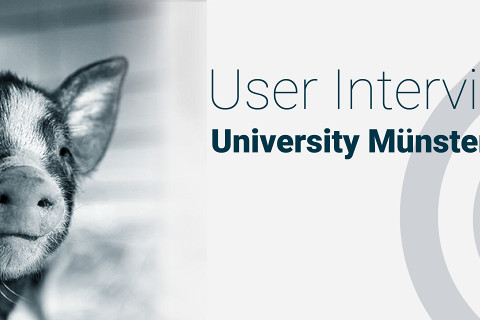Maximilian Marschall works as a TA at the Gene Center of the Ludwig-Maximilians-University Munich in the Wolf research group. In a pancreatic cancer study he used the automated cell counter and the stain-free viability measurement function of the fluidlab R-300 and tells us about his work in this interview.
anvajo: Thank you very much for taking time for us. How did you hear about our fluidlab R-300 and what did you use it for?
M. Marschall: My first contact occured through my boss, who received a test device from anvajo. We are working on a pancreatic cancer study. The fluidlab R-300 measured cell viability in our genetically modified cell lines (CRISPR/Cas9 knockout lines) and for the assays also determined the cell count.
anvajo: How did you work before you had the fluidlab?
M. Marschall: With manual cell counting using a counting chamber. We often use an MTT assay to analyse cell viability, i.e. the proportion of living cells in a cell population. We also use proliferation assays by incorporation and subsequent detection of BrdU in DNA synthesizing cells. This is an assay that examines how fast the cells multiply. You simply compare the modified/treated cell line with the control cell line and see which one grows faster. Both assays require a lot of time.
With the fluidlab this process was very easy, because I could automatically count the dead or living cells of each cell line after a certain growth period within a short time.
We had not even planned to carry out viability measurements for these cell lines. So the fluidlab has enriched our work in this area. Viability measurements are very time-consuming; you have to count all cells individually beforehand and then stain them.
anvajo: So you did not test the fluidlab with other methods?
M. Marschall: Cell counting with the fluidlab was sufficient for our needs. And we are using it in this project in addition to the proliferation assay. It is accurate and counts every single cell. And it is of course extremely practical that I can simply place the fluidlab under the bench. It's nice and small and handy.
anvajo: That's actually a big advantage that is mentioned again and again. Were you also satisfied with the repeatability?
M. Marschall: I once had the case that there were too few cells in the sample, then it became a little imprecise. If there were more cells, i.e. over 100, I was satisfied with the repeatability.
anvajo: Did you miss any training or something?
M. Marshall: No, it was quite intuitive. I don't think I even had to read the manual. The device tells you everything you have to do. I also lent the device to a colleague once, who could use it directly without any instruction.
anvajo: Thank you very much for the insight into your work and good luck for the future!





